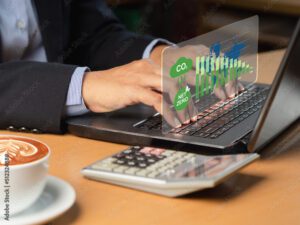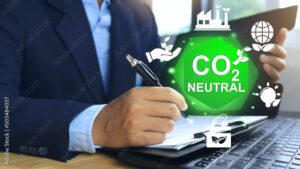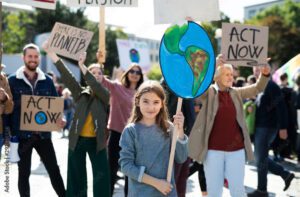Networking, Birds of A Feather
AC Patio (8:00 am)
Join us in the patio for networking and coffee before sessions begin.

Join us in the patio for networking and coffee before sessions begin.

A warm welcome by our BRMA President.
Overview of the day’s agenda, activities, logistics and welcoming our amazing sponsors BSI, Fusion and Riskonnect.

Equity and Climate Justice
Climate change is fundamentally about justice. Those who contribute the least to climate change bear the greatest burden of climate impacts, while those who contribute the most feel the least effects. Across the globe, poor communities and communities of color already are and will be impacted the hardest by the effects of climate change, and these populations will have the fewest resources to respond and adapt. Climate change is an outgrowth of entrenched systems of racial oppression, colonialism, and patriarchy. Today, the extraction of fossil fuels does not happen without oppression, overworking and underpaying workers, pushing out tribes and indigenous people, and dumping pollution on communities of color.
COVID-19 and the climate crisis connect, the pandemic also exacerbated environmental degradation. Factory farming is a huge driver of carbon emissions and contributes to the increased mutation of pathogens. When pathogens mutate at a higher frequency, the likelihood of pandemic-like events such as COVID-19 increases. Hospitalization and mortality rates for people of color are a huge climate-change-related public health issue. With communities of color bearing the brunt of fossil fuels-based pollution and waste, effects like air pollution hospitalize Black and Brown people at alarming rates. COVID-19 illuminates these issues, the pandemic disproportionately affecting communities of color. Essential workers living in frontline communities are most at risk of contracting the virus, and lower-income communities have fewer protections and resources for recovery. The COVID-19 response has also not been carbon neutral. Fossil fuel companies benefited from large sums of COVID-19 response money, which in some cases was not used ethically.

According to the recently released federal Sea Level Rise Technical Report, sea level along the U.S. coastline is projected to rise, on average, 10 – 12 inches (0.25 – 0.30 meters) in the next 30 years (2020 – 2050), which will be as much as the rise measured over the last 100 years (1920 – 2020). The report provides the most up-to-date sea level rise projections available for all U.S. states and territories that decision-makers can look to for information. The multi-agency effort that lead to the report’s first update since 2017, offers projections out to the year 2150 and information to help communities assess potential changes in average tide heights and height-specific threshold frequencies as they strive to adapt to sea level rise. NOAA National Ocean Service Oceanographer Dr. William Sweet will provide an overview of the report’s findings and what it means for federal, state and local efforts to mitigate the impacts of climate change’s affect on sea level rise.

Ready to create instructional herb garden kits for youth centers, schools, and nonprofit food assistance programs. These kits will help children and families learn what is needed to cultivate their own food and prepare for climate change that may affect our food crops. Each kit will include all the materials needed for a youth to grow four seed types: parsley, cilantro, chives, and basil.
The kits will also provide four pulp baskets to grow each seed type. Volunteers will assemble the seed kits and an informational recipe card for each seed that describes the proper growing instructions and a recipe to try out so they can enjoy their new herbs!
Supplies included: Seeds, coin envelopes, pulp growing baskets, burlap sacks, sprout bags, non-toxic fabric markers, cardstock sheets, sealable sandwich bags, spoons, blank cards and instructional materials.
Makes 2 Herb Garden Kits with 4 types of seeds each.
Stay Tuned! Details coming soon…
You’ve probably heard the three letters ESG used together as part of a risk management or compliance discussion, but what does the acronym really mean? And what’s the relationship – or potential value-adding relationship – with business continuity and resilience?
Join Brian Zawada and Elliott Yama from Riskonnect as they introduce their respective areas of subject matter expertise and share their perspective on how companies can share information and prioritize risk treatments that benefit both their organizations and well as people and the planet.
Presentation objectives include:
Defining the most important outcomes from ESG and BC
Summarizing the overlap between the two disciplines (as well as with third-party risk management)
Introducing an approach to coordinate approaches to drive efficiency and effectiveness
Concluding with why the two should work together to improve resilience and sustainability

This session will educate participants on the types of climate forecasting needed to establish effective climate risk management systems and reporting. Information provided by credible forecasting related to locations throughout the value chain is a crucial element of a climate risk adaptation management system. This enables companies to prioritize efforts and understand how value chain stakeholders understand and manage current and future risks.
Appropriate forecasting identifies the potential for harm and the types of climate disruptions, including: drought, wildfire, sea level rise, extreme rainfall, wind, heat, etc. Information on the current and future operating environments enables companies to then understand the sensitivity to these hazards based on the types of operations, commodities, etc. This analysis then enables companies to assess site practices against these risks, and understand overall vulnerability.

The UN Intergovernmental Panel on Climate Change (IPCC) has forecast increasing volatility and frequency of significant climate disruptions, even in their most optimistic projections. Extreme temperatures, drought, flooding, and other climate impacts result in significant disruption and increased costs related to company sites, property, and supply chains. Your company’s approach to managing climate risk is shaped by your organization’s unique vulnerabilities, value chain, and the financial impact on your business operations.
BSI will facilitate a workshop to educate participants on how to establish a management system based on the principles of key standards on the topic, including ISO 14090 (Climate Risk Adaptation), ISO 14091,(Climate Risk Adaptation: Risk Assessment) and principles of the Taskforce for Climate-related Financial Disclosure guidelines (TCFD). This will include understanding physical risks and transitional risks, and necessary management system elements to adopt to best identify and mitigate climate risks in the value chain.

More frequent and intense disasters call for better preparedness at home, school, work and in our neighborhoods. This session will focus on simple first steps individuals and families can take to increase readiness. We will discuss how your preparedness strengthen and helps you contributes to the resilience in your community. Learn about moving your preparedness goals from “you” to “us” and about resources such as Community Emergency Response Teams (CERT) and Organizations Preparing for Emergency Needs (OPEN) training that FEMA offers to help prepare the community in the face of more frequent and larger disasters.

In this session you will learn about the intersection of business continuity and ESG and key takeaways to:
Showcase ways BC professionals support ESG today
Leverage data from your BC program to understand your organizations ESG impact
Help your organization succeed on your journey towards operational resilience
Stakeholders such as investors, employees, customers, and insurers increasingly view climate disruption as a material risk that requires a structured, scalable framework of practices to predict and mitigate disruptions. These stakeholders increasingly demand that companies disclose their approach to managing these risks in alignment with the Task Force on Climate Related Financial Disclosures (TCFD) framework. Regulatory agencies are also increasingly aligning their disclosure requirements with this framework, which reflects the heightened awareness of the urgent need to transition to a resilient, low carbon economy.
Businesses anticipate increased investor and customer scrutiny resulting from new rules proposed by the US Securities and Exchange Commission (SEC) related to public companies’ disclosure of climate-related risks. The ruling reflects the SEC’s belief that climate risk is financial risk, and that shareholders need accurate information about company climate risk exposure and practices to make informed investment decisions.
This session will educate participants on what is needed for both the SEC proposed reporting requirements and those of the TCFD.
Today’s presentations likely opened eyes and delivered a few things to think about.
Regardless, climate change will likely have a wide range of impacts on all organizations, not only internal impact on day-to-day operations, but on customers, suppliers and the market-place in general.
In this closing session, we will briefly recap key learnings and take-aways from each session and how to leverage the information to improve sustainability and resilience in our organizations. We will also invite conference participants to ask questions and offer additional commentary on how they intend to use what they learned today.